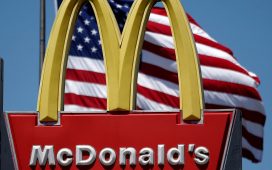99 Cents Only Stores is closing all of its 371 locations across the US as the company begins to wind down its business operations.
The budget retailer announced the closures on Thursday, with liquidation sales starting on Friday. In a statement, the company said the move came after months of seeking alternative options.
“This was an extremely difficult decision and is not the outcome we expected or hoped to achieve,” said interim CEO Mike Simoncic.
“Unfortunately, the last several years have presented significant and lasting challenges in the retail environment.
“We deeply appreciate the dedicated employees, customers, partners, and communities who have collectively supported 99 Cents Only Stores for decades.”
According to the Los Angeles Times, 99 Cents Only Stores has about 14,000 employees. It is unclear how many jobs will be lost, and a timeline for the store closures has not yet been given by the retailer.
Founded in 1982, 99 Cents Only Stores operates in four states: California, Arizona, Nevada and Texas. Mr Simoncic said the “unprecedented impact” of the Covid-19 pandemic played a major part in the company’s troubles.
The interim CEO, who announced he was stepping down on Thursday, said that “shifting consumer demand, rising levels of shrink, persistent inflationary pressures” were also signifcant factors.
The announcement marks the latest in a series of store closures across the US, with Family Dollar and Dollar Tree announcing last month that they are closing 1,000 locations across the US.
“Persistent inflation and reduced government benefits continue to pressure the lower-income consumers that comprise a sizable portion of Family Dollar’s [customers]”, CEO Rick Dreiling said.
US-based international retailer Walgreens has also said it plans to shut some US stores following severe losses, with 150 closures announced last month. Pharmacy chain CVS will be shutting 300 locations in 2024, following 600 closures over the past two years.
Most recent figures show that around 4,600 stores closed across the US last year, an 80 per cent increase from 2022 in what some experts have termed a ‘retail apocalypse’.
Many retail bosses point to the Covid-19 pandemic as a tipping point, with the past few years brining high inflation, a rise in online shopping, increased shoplifting rates, and rocketing rental prices.









